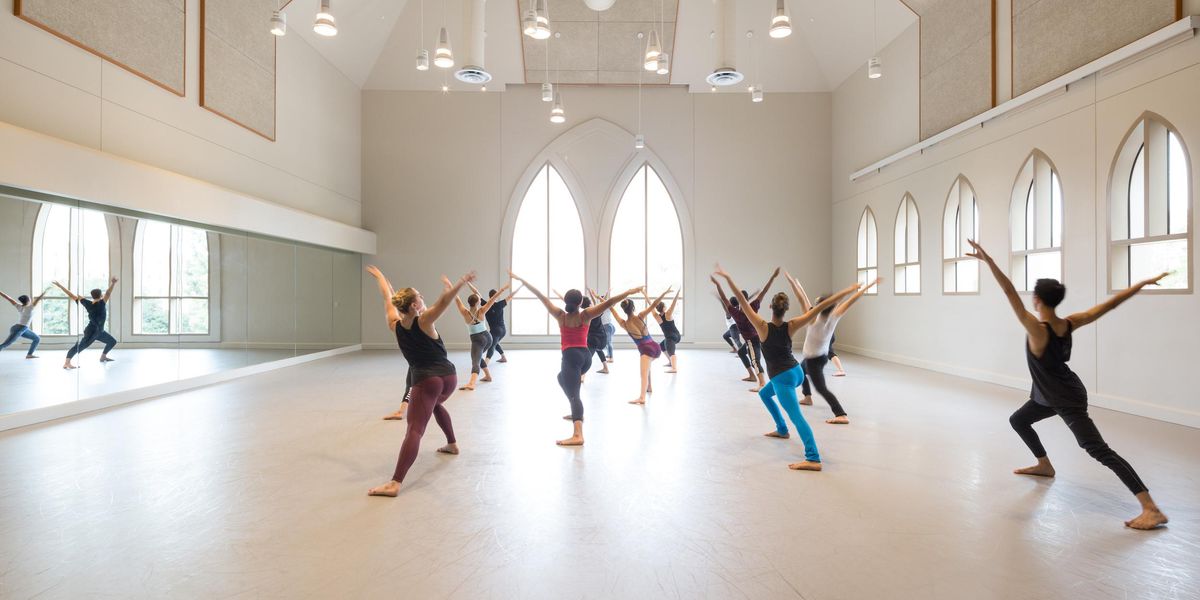Should You Break These Ballet Rules?
Why they exist, and when you can make exceptions.
Wearing pointe shoes at barre helps prepare your muscles for center. Here, class at Houston Ballet Academy. Photo by Jaime Lagdameo, courtesy Houston Ballet.
Imagine this: You’ve spent your whole life working to keep your hips perfectly square in arabesque. But one day you take class with a new teacher, and she not only says it’s okay to open your hip—but that you should. You begin to move with more freedom, and are amazed by the length of your line. But you also wonder, What about all my teachers who said this is wrong? Were
they wrong?
In an art form where rules are set to maintain technique, style and dancers’ safety, it can be confusing to hear opposing ideas from different teachers. But the reasonings behind these debated principles aren’t usually black and white. It’s up to you to learn when to follow them—and when to break away.
1) The heels should always touch the ground in demi-plié.
Nearly every teacher will tell you that the heels must touch the floor in plié. It allows you to access more power, while lengthening the Achilles tendon and protecting the ankles. If a dancer develops the habit of not fully relaxing into the floor, she’s more prone to joint injuries and shin splints.
But watch professional dancers closely and you’ll see that sometimes it just doesn’t happen. “Mr. Balanchine’s choreography was all about moving big and fast, and it’s just the reality that you’re moving from position to position so quickly that the heels don’t come down,” says Darleen Callaghan, director at Miami City Ballet School. It’s no coincidence that Balanchine choreography is typically reserved for advanced dancers, whose ankles are already well developed, and who have the necessary technical base to support the joints when landing and transitioning quickly.
The bottom line:
Embrace your plié, striving to get the heels down. But it’s okay if certain rep calls for something a little different.
2) Don’t wear pointe shoes at the barre.
Teachers argue that wearing ballet slippers at the barre helps dancers articulate and develop the small muscles of the feet. “When you wear pointe shoes at the barre you’re missing lots of little steps, especially rolling through pointe and feeling all five toes on the floor,” says Stanislav Issaev, faculty member at the Kirov Academy of Ballet in Washington, DC.
But there are positives for wearing pointe shoes, too. “It strengthens the feet, abdominals, hamstrings,” says Shelly Power, director at Houston Ballet Academy. “It’s a whole different ballgame when you have pointe shoes on in the center—wearing them at the barre is getting that muscle control ready.”
The bottom line:
Think about the rehearsal you have to prepare for, and what would benefit you most. Regardless of what you choose, warm up your feet before you start barre.
3) Turnout comes solely from the hips.
Forcing turnout—pushing your feet into an unnatural fifth position—is dangerous for the ankles and knees. But in reality, a small amount of rotation should come from the lower legs. A paper published by the International Association for Dance Medicine & Science (IADMS) says that “on average, 60 percent of turnout is created by outward rotation of the hip. Twenty to 30 percent of turnout may then emanate from the ankle, with the remaining percentage created by the tibia and knee joint.”
Teachers tell students to turn out only from the hips because dancers can easily get carried away and cram their feet into unsafe positions. At the same time, only thinking about hip rotation doesn’t allow you to realize your maximum potential. “Turnout is outside of the comfort zone, and sometimes people think that is forcing,” says Issaev.
The bottom line:
Think of turnout as starting from the hips, rather than living there exclusively. “Rotation begins in the hip socket, but extends down the femur into the knee, shin and foot,” says Callaghan. “It engages a lot more than the gluteal muscles. It is a total rotation of the leg, supported by the musculature, especially the inner thigh and back of the leg.”
To help engage turnout muscles, Power recommends floor barre, which gives dancers the feeling of full-leg turnout, without any danger of using the floor to tweak the joints.
4) Don’t open your hips in arabesque.
Most teachers will agree that you should strive for squareness in all positions because it’s ultimately the most correct. “You have to make sure that the supporting leg is really strong before you open that hip,” says Callaghan. “But if you’ve got an upper-level student who has a strong standing leg, strong core and everything is well established, then they can begin to open up that beautiful arabesque line.”
Even Vaganova teachers who praise squareness say there is an acceptable degree of hip opening based on your body type. “It would be great if everyone was built like Zakharova, but most of us have limits and you have to work through them,” says Issaev. “It’s little compromises, a little bit here, a little bit there.”
The bottom line:
Once you’ve got a solid, square base, allow yourself enough freedom so you can move a little bigger and achieve a correct, but aesthetically pleasing, line.




